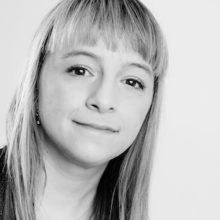
Robohub.org
Science without borders: Becoming cross-disciplinary

Those who move away from home, for long enough, know that you end up not belonging anywhere. The more you move the easier it becomes. Looking back, you realize that you’ve learned new languages and cultures; you know how to get around like a local. It’s worth the effort. Yet, at parties, you’re always the foreigner. You have stories of how things are done differently in other places, some of your insights are useful, most are shrugged off. Why should they do things differently, and who are you to tell them? The fact is, you can’t really understand the challenges they face, you’re not from there.
I’m from computer science, moved to robotics and now live in bio-engineering. My home is a mix of processors, sensors, actuators, cells and nanoparticles. Science has no official border, yet I’ve had to learn a new language and culture for each discipline. Grants are the visas you need to explore new places. Grants are nearly never given to outsiders, only to the locals, the experts with preliminary data. Luckily, some organizations like HFSP, give wild cards to people like me, regardless of their origin.
Like a newcomer eager to fit in and unaware of the challenges, I started my integration, attending all the seminars and resurfacing lost skills with Khan Academy. A computer scientist could become a roboticist and a roboticist could be a bio-engineer, why not? We are all researchers after all. Then I realized that integration takes years — longer than a postdoc — and you risk losing your identity in the process. At parties, when people asked what I did, I would go into a tirade about computers, flying robots and nanoparticles to cure cancer. Oh that’s interesting, like being quarter Japanese, Italian, Irish and Egyptian.
A brilliant professor then told me, “You need to be an expert in something. That is your identity.” I am a swarm engineer. I like to discover new ways in which large numbers of simple agents can work together to perform complex tasks. I use computer tools like crowdsourcing and machine learning to discover swarm strategies and apply them to real world systems such as robotics and nanomedicine. I’ve gone from trying to integrate into new fields to integrating fields.
There are no travel guides in cross-disciplinary science, it’s all unblazed trails. That is part of the excitement, bridges need to be built, and you’re the first one on the other side of the river. If you want to learn a new field, you need to go there and understand the language and culture. You won’t understand what is challenging until you try, and they won’t warn you because it is obvious. Since you are bi-lingual, you need to explain your work in their language, don’t expect them to know anything of your origin or the challenges you face. Find a nurturing and open-minded environment to welcome you (thank you Bhatia Lab!). Identify your expertise and use that as an anchor in everything you do (thank you Nagpal Lab!). Finally, don’t naturalize, fuse your backgrounds. At least, that is how I see things now.
This summer I’ll be at the Lindau Nobel Laureates Meeting, listening to 35 Nobel Laureates in chemistry. It looks like I’ll be learning a new language, maybe there is some swarm engineering to do there? I just hope that the person checking my passport at the next academic border (i.e. faculty search, grant office) will not look at the stamps, and wonder why I’ve been to so many different places.
Here is a great summary made by Ilana Schoenfeld that explains swarm engineering and presents some of my work.
tags: bio-inspired, Flying, Nano, opinion, Swarming




